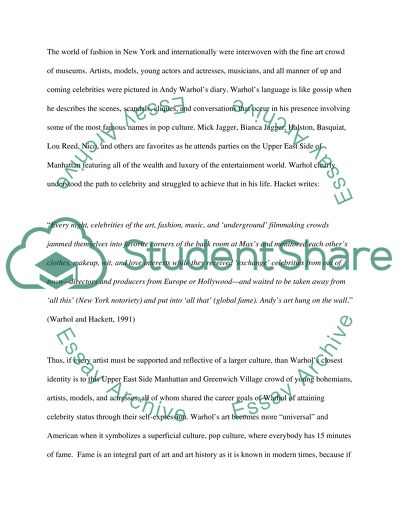Cite this document
(“Andy Warhol's Pop Art Research Paper Example | Topics and Well Written Essays - 1750 words”, n.d.)
Retrieved from https://studentshare.org/visual-arts-film-studies/1417978-andy-warhols-pop-art
Retrieved from https://studentshare.org/visual-arts-film-studies/1417978-andy-warhols-pop-art
(Andy Warhol'S Pop Art Research Paper Example | Topics and Well Written Essays - 1750 Words)
https://studentshare.org/visual-arts-film-studies/1417978-andy-warhols-pop-art.
https://studentshare.org/visual-arts-film-studies/1417978-andy-warhols-pop-art.
“Andy Warhol'S Pop Art Research Paper Example | Topics and Well Written Essays - 1750 Words”, n.d. https://studentshare.org/visual-arts-film-studies/1417978-andy-warhols-pop-art.


